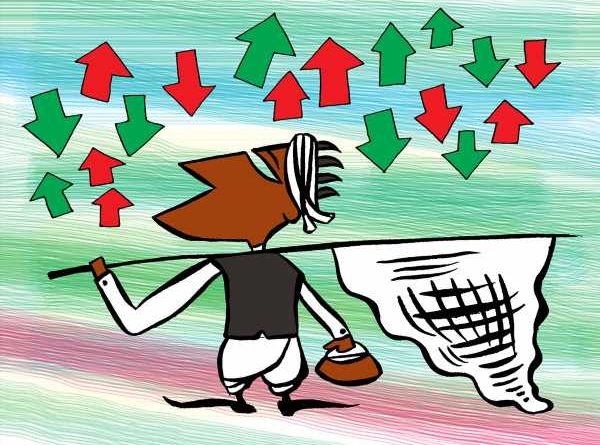Retail play in equities cash segment dwindles amid high volatility
Heightened volatility and lacklustre returns continue to make a dent in retail participation in the equities cash market segment.
The percentage of retail participation in the average daily turnover in the National Stock Exchange’s (NSE’s) cash segment has come down to 40.8 per cent in February 2023, from 52 per cent a year ago.
At the peak, retail investors accounted for nearly two-thirds of cash market volumes in July 2020.
The average retail share in cash market volumes has seen sustained decline — from 56.1 per cent in 2020-21 (FY21) to 51.4 per cent in 2021-22 and 47.1 per cent so far in 2022-23 (FY23) — reveals data provided by 5paisa.com, a leading retail brokerage.
The retail share in February is said to be the lowest in nearly three years.
Industry players said several small investors have lost interest in the market due to poor returns and intense volatility.
The increasing share of retail in FY21 was underpinned by a secular upmove in the markets and low volatility, they observe.
“The market has been lacklustre for the past 14 months.
“Earlier, the market was giving 50-100 per cent returns.
“That, along with other factors, had fuelled retail investor growth.
“With 110 million dematerialsed accounts, there has to be some fatigue,” says Prakarsh Gagdani, chief executive officer (CEO), 5Paisa Capital.
The benchmark Sensex and Nifty indices are currently below their October 2021 levels, indicating poor returns over 15 months.
In the past three months, the Nifty and the mid- and small-cap indices have come off between 8 per cent and 10 per cent.
“Retail participation in the cash market is going down because markets are down.
“The Nifty is down 7-8 per cent from its highs.
“But if one looks at the mid- and small-cap segments, the returns have been discouraging for retail investors,” says Tejas Khoday, co-founder and CEO, FYERS.
Khoday says investors who joined the markets in 2020 made a lot of money unwittingly.
They continued the journey for the next two-three years.
“As markets turn choppy, many investors exited the markets. It is unlikely they will return anytime soon. Big crashes shake investor confidence. This is what happened with cryptocurrency. A generation of traders is out of the market.
“Casual participants in equity markets have disappeared,” adds Khoday.
Some believe that looking purely at retail participation in the cash segment may not offer a true picture.
The drop in retail share in the cash segment coincided with their increased participation in the derivatives options segment.
According to NSE data, the share of individual investors in index options increased from 28.8 per cent in 2019-20 to nearly 36 per cent in FY2
Industry players say the shift from cash to options is driven by regulatory changes and increased margins.
“The jump in options over the past two years is mostly due to intraday stock traders switching to options after intraday leverage restrictions in early 2021,” tweeted Nithin Kamath, CEO, Zerodha, India’s largest brokerage.
“Until 2021, brokers could offer as much intraday leverage as they wanted.
“This made trading stocks attractive. But once maximum leverage was capped at 5x, intraday traders switched to futures and options (F&O), given the ability to hold short and leveraged positions overnight.”
Kamath also highlighted that about 10 per cent of active traders contribute to 90 per cent of trading volumes, mostly intraday cash and F&O.
As a result, the industry may not sweat much over a fall in active client base.
However, a sustained decline in retail participation from the high-yielding cash segment may pinch in the long run.
Source: Read Full Article


